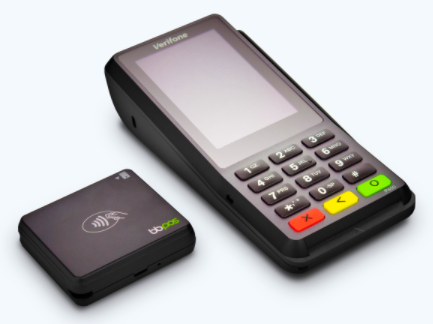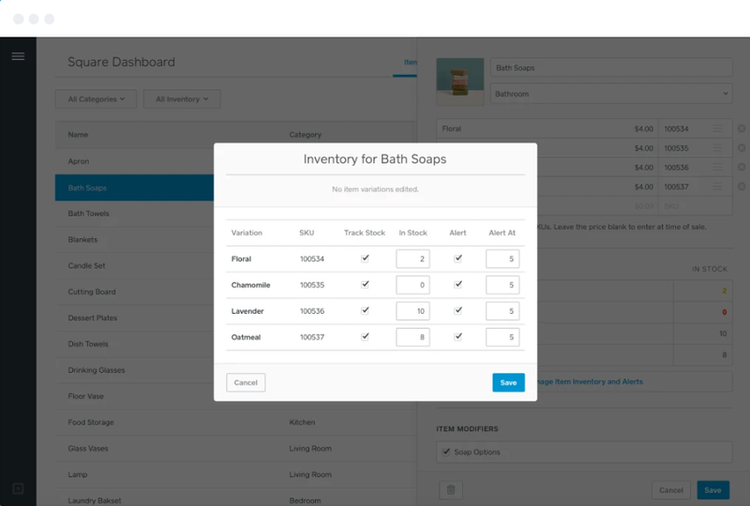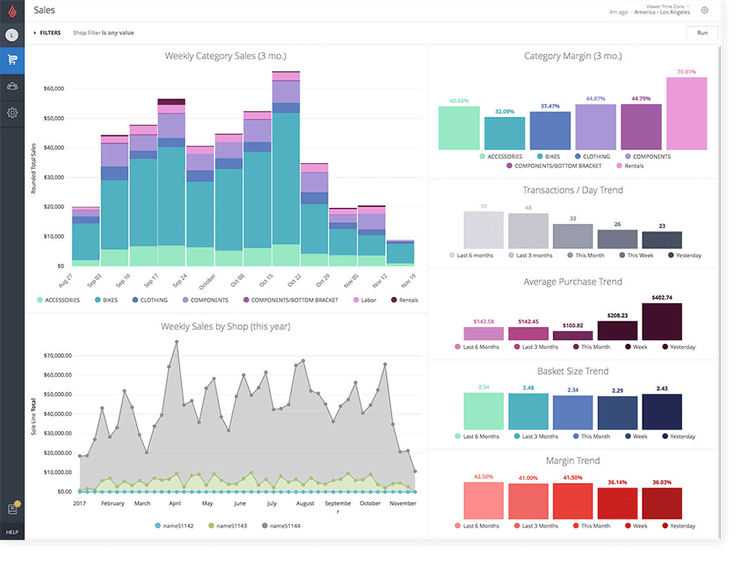POS (point of sale) systems should help merchants do more than just accept credit card payments -- the best POS systems will help you streamline processes and manage all of the moving parts involved in running a business.
The amount and type of POS features you’ll need will depend on your business type and size, but there are five features we think all businesses need to help them thrive. We’ll go through the different types of POS systems on the market, and the five POS features that all merchants need.
Overview: What is a POS system?
POS, or point of sale, systems combine software and hardware that businesses use to take cash and card payments and run many operational aspects of the business, such as inventory, employee and customer management, and sales tracking and reporting.
The most recognizable POS hardware devices are the handheld POS terminal and countertop card readers that many retailers use to accept card payments. The software runs on the POS hardware.

Stripe’s proprietary POS terminal and card reader are an example of common handheld POS systems. Image source: Author
Types of POS system
When choosing a POS system, you need to consider the different types of setups available for your business. Whether you’re running a bar, restaurant, or multi-location retail business, you can find an ideal POS system with specific features for your business.
The following are three of the most popular POS systems on the market.
Type 1: Retail POS systems
Retail POS systems help retail-focused businesses process customer transactions, manage stock and inventory, manage purchase orders, manage customer information, run discounts and rewards, manage staff, and run sales reports.
Type 2: Restaurant POS systems
Restaurant POS systems include distinct restaurant-specific features. These systems usually include all of the features retail POS systems offer plus menu management, raw ingredient tracking, floor plan management, split-bill functionality, delivery service integration, and more.
Type 3: Bar POS systems
Bar POS systems usually come with the features included with a retail POS system. They also offer bar-specific features such as menu management, timed events (setting promotional prices/offers for happy hours, etc.), drink modifiers, split-bill functionality, table management, and more.
The 5 features your small business POS needs to have
No matter your industry or business type, any POS system you choose should offer a set of core features that help you manage all of the main operational tasks involved in running a store, bar, or restaurant.
Feature 1: Integrated payment processing
POS systems that offer integrated payment processing (either via their own in-house payment processor, or with a separate merchant account that integrates with the system) help businesses streamline payment transactions.
This is because the POS system and the payment processor exchange the necessary data automatically.
Without integrated payment processing, merchants need to manually enter customer credit and debit card information (similar to using virtual terminals), meaning every time you make a sale, you need to spend extra time keying in information that could be entered automatically.
Using integrated payments, merchants pay a processing rate per transaction that's fixed by the payment processor.
Benefits of integrated payment processing:
- Merchants can accept all payments types: Cash, card, and mobile payments are all compatible with integrated payments. You’ll also be able to see how many sales you made via each type of payment.
- Integrated payments offer protection: Many integrated systems offer end-to-end data encryption, built-in PCI compliance, and protection against fraud.
- Reduces chances of human error: As well as removing the need for entering payment information manually, choosing a system with integrated payment processing means merchants don’t need to worry about manual end-of-day reconciliations.
Feature 2: Inventory management
Smaller retailers might think they don’t need any inventory management assistance because they don’t carry a lot of items, but inventory management is so much more than knowing how much stock you’re carrying.
This feature is important for helping merchants track real-time inventory without manually counting each item, it sends alerts and notifications when stock levels are low, and with inventory reports, it helps identify best-sellers and unpopular products that eat into profits.

Square tracks stock levels and sends low stock alerts. Image source: Author
Ultimately, a POS system with inventory management helps merchants plan ahead and make sure they’re stocked with the products their customers want.
Feature 3: Employee management
Employee management POS features not only help to manage your staff day to day, they can also save you both time and money.
A POS system with employee management functionality allows staff to clock in and out of the system. Systems with more robust functionality won’t let employees clock out before they enter how much they’ve made in tips that day.
Managers can also set permissions based on roles and seniority, which gives employees access to the features they need and nothing more.
Some systems also track, pool, and split tips between servers, which takes the burden off managers.
Feature 4: Sales reporting
Sales reporting is an essential POS feature. This functionality gives business owners insight into their entire operation, and it facilitates data-driven decisions that ultimately drive revenue.
Reports give merchants a chance to not only see how many sales they’ve made, but to also see their best- and worst-selling products and customer buying trends.
For example, reporting shows what days and times are most popular and cross references them with product levels, meaning business owners can schedule staff more efficiently and have the right products in stock at the right time.

Lightspeed provides information on sales, margins, categories, best sellers, and more. Image source: Author
Feature 5: Customer management
Making it easier for customers to make repeat purchases should be a priority for any merchant. Customer management features can help you:
- Create customer profiles: Store their details, making it easier to make repeat payments. You can also segment customers on the back end, allowing you to offer them highly-targeted discounts.
- Store purchase data: Store your customers’ purchase histories to help you create personalized offers based on historical choices and buying trends.
- Run loyalty programs: Reward customers via loyalty schemes, and help them accumulate rewards points.
Let features guide your POS system selection
When it comes to choosing a POS system, don’t let cost be your only factor. POS features and requirements are key to making the right choice for your business, and although some features are optional, we believe these five features are must-haves for small businesses.
Depending on your industry, some of these features might not be crucial for running your business, and you may need others not listed here.
If you’re looking for more feature-specific POS systems and features, you can check out our pick of the best bar POS systems and the best retail POS systems.
Our Small Business Expert
We're firm believers in the Golden Rule, which is why editorial opinions are ours alone and have not been previously reviewed, approved, or endorsed by included advertisers. The Ascent does not cover all offers on the market. Editorial content from The Ascent is separate from The Motley Fool editorial content and is created by a different analyst team.